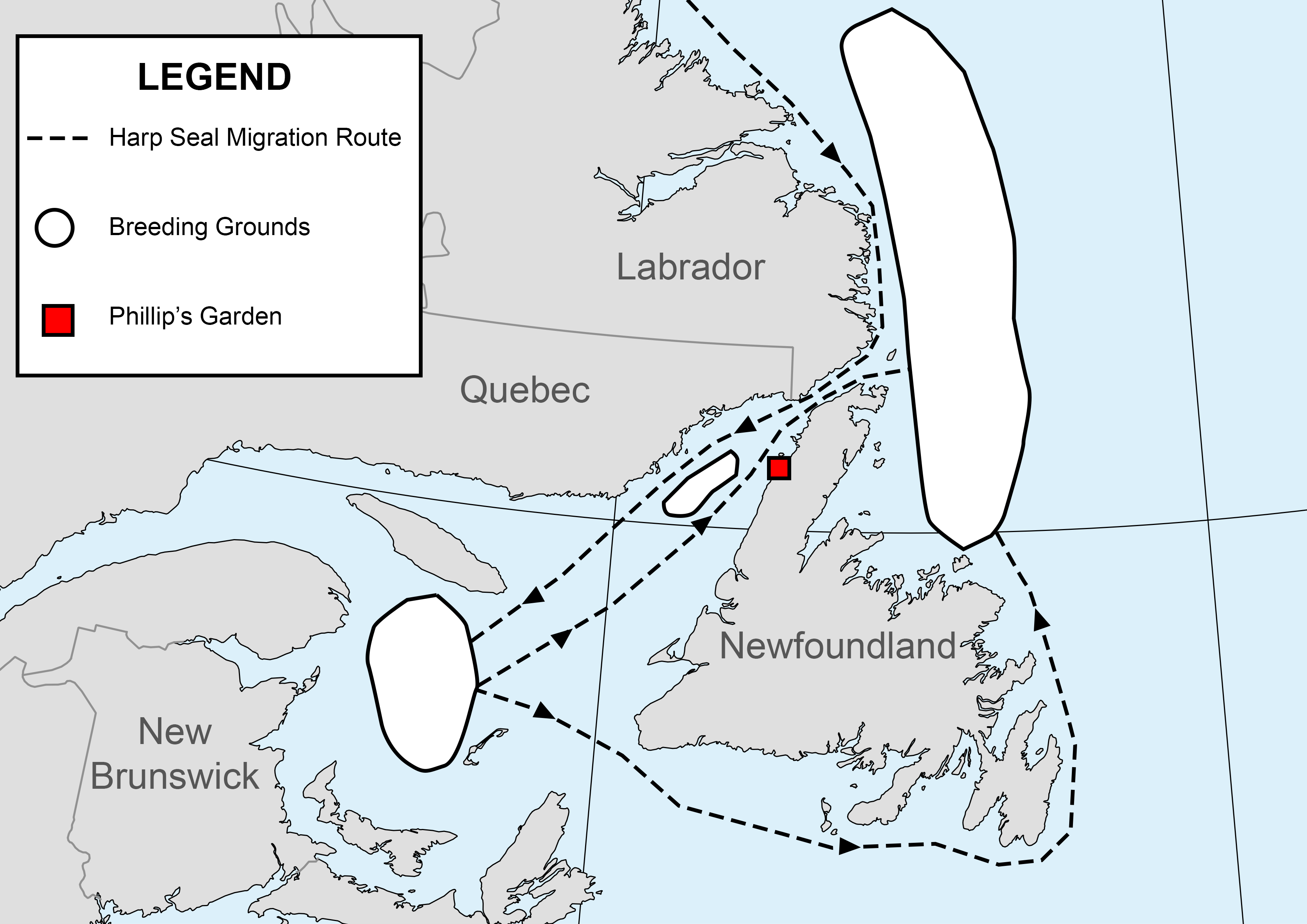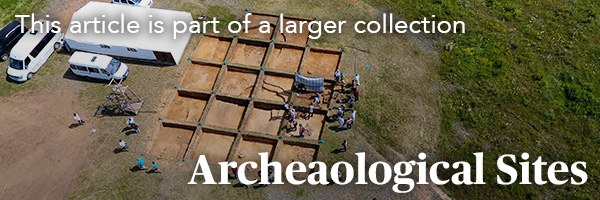Phillip’s Garden is one of North America's most intensively occupied Dorset (Tuniit) archaeological sites. Located in northwestern Newfoundland on the Point Riche peninsula, it lies near the community of Port au Choix. The area around Port au Choix has an extensive history of human habitation dating back nearly 6,500 years. Unlike most Dorset sites, which tend to have only a few houses or tent rings and were occupied seasonally, Phillip’s Garden has over 160 houses, making it one of the largest known Dorset sites in North America. The relatively consistent Dorset habitation at Phillip’s Garden was made possible by the rich marine food sources that were readily accessible at the site.

Unique Geography
The Point Riche and Port au Choix peninsulas are located where the Strait of Belle Isle, the stretch of ocean that separates the island of Newfoundland from Labrador, widens into the Gulf of St Lawrence. It is also located at the northeastern edge of the deep underwater Esquiman Channel. Along with these physical characteristics and a host of other favourable geographic elements, the area is rich in marine life.
In particular, it is an important feeding location for the harp seal along its migration route from Arctic waters toward its breeding grounds in the Gulf of St. Lawrence. Although there is variation between different subpopulations and years, harp seals spend the summer in Arctic waters, sometimes as far north as northern Greenland and Ellesmere Island, to feed and accumulate blubber. During the fall and early winter, they migrate southward along the Labrador coast toward the Strait of Belle Isle and the Gulf of St. Lawrence to breed. They eventually return to the Arctic feeding grounds at the start of summer.
The Point Riche peninsula is the closest part of land to this harp seal migration route, making it an ideal location for the Dorset, marine-adapted hunter-gatherers, to live and hunt seals. It was during the fall and, especially, spring migration cycles that the Dorset would have most intensely hunted seals at Phillip’s Garden.
Archaeological Site
The Dorset presence in the area of Phillip’s Garden is split across three different archaeological sites: Phillip’s Garden East, Phillip’s Garden West and Phillip’s Garden itself. Phillip’s Garden East and Phillip’s Garden West show the earliest evidence of human presence in this area, starting with the Groswater, a regional subgroup of the Dorset (Tuniit), roughly 2,800 years ago (see Geographic Distribution of the Dorset Culture). Phillip’s Garden is situated between these two other sites in a roughly two-hectare coastal meadow. In total, this site has at least 160 confirmed house features. The site has been studied since the 1950s. But, given its size, only a small fraction of all the identified houses have been fully excavated. Almost all these houses are semisubterranean, with many having complex internal stone features. These internal stone features, which run the length of the house and split the interior space in half, resemble the “axial passages” or “mid-passages” found at other Dorset sites. These types of architectural features were multipurpose and were central places for storage, cooking and heating. Although some lightly built “tent rings” exist at the site, these semisubterranean houses are more typical of houses the Dorset would live in from fall to spring. While houses like this are seen at other Dorset sites across the Arctic, Phillip’s Garden is unique in the quantity of houses at a single site. Importantly, not all houses would have been used at the same time, and the identified houses represent many different centuries of use. There are even likely earlier phases or houses, such as those constructed by the Groswater, that subsequent occupational phases have erased.
When did people live at Phillip’s Garden?
The rich marine resources around this area have meant the Port au Choix area has been an important location for human habitation since the earliest known peoples, called the Maritime Archaic by archaeologists, arrived in the region nearly 6,500 years ago. The earliest occupation around Phillip’s Garden, specifically, began nearly 3,000 years ago with the Groswater. Dorset groups continuously inhabited the area until roughly 1,200 years ago (CE 800), when the site was abandoned. The Dorset disappear entirely from Newfoundland and much of Central and Southern Labrador around this time as well.
While some of the excavated material suggest a Groswater presence that is contemporaneous with the Phillip’s Garden East and Phillip’s Garden West sites, all the house features appear to have been constructed by later Dorset groups starting around 2,000 years ago. The Dorset lived here for nearly 800 years before they abandoned the site around 1,200 years ago (CE 800). Unfortunately, it is not fully known why the Dorset abandoned the site. Environmental analysis has shown a general warming trend in the last couple hundred years of the Dorset presence at the site. This would have caused major disruptions to the extent of sea ice in the area, which would have made harp seal hunting increasingly difficult for the Dorset. The Dorset seemingly abandoned the entire island of Newfoundland around this time but would continue to live in the Arctic and parts of Labrador until roughly 700 to 800 years ago.
The archaeological evidence at Phillip’s Garden demonstrates a complex use of the site, with Dorset groups likely visiting the site at least annually to participate in a spring seal hunt. However, emerging evidence shows the occupational phases of the site were likely more complex and changed over time, suggesting the Dorset lived at the site even outside of the seal-hunting season.

 Share on Facebook
Share on Facebook Share on X
Share on X Share by Email
Share by Email Share on Google Classroom
Share on Google Classroom









